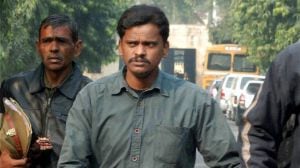Bridging the warrior-victim divide
Every protest, especially against new technology, needs a horrifying vision of doomsday. A reinvention of an earlier nightmare, as it wer...

Every protest, especially against new technology, needs a horrifying vision of doomsday. A reinvention of an earlier nightmare, as it were, to nudge the lay public out of its complacency with forebodings about the end of life as we know it. So it is with the organic foods cult in a passionate battle being fought as much in the fields as on the Internet as the scientific community contemplates the contours of the imminent biotechnology revolution.
Angst over inordinate interventions in nature — and the preposterous attempt to trespass onto realms that belong only to God — provide the philosophical underpinnings to the debate, but it is the invocation of the nuclear revolution that never really delivered limitless, cheap energy that animates the opposition to genetically modified seeds.
Terms like genetic meltdown and transgenic radiation are common in protest literature, Chernobyl is a meta-phor for the nutritional hazards on our plate. And if the scientists and giant life sciences corporations seemunperturbed about any untoward fallout as they gush over the second green revolution based on exploiting gene-splicing technologies to produce acreages of fatter, rosier tomatoes and plastic-producing plants, well, they too are striking the inflexible, optimistic posture nuclear physicists did in past decades.
Interesting, then, that the comparison was foreshadowed way back in the mid-eighties. Physicist Freeman Dyson argued that the pro- and anti-nuke communities simply did not speak the same language, thereby stymieing any leap forward. It would be a pity if the absolutist attitudes of the scientists and the protestors too lapsed sans dialogue into a war of words, especially in a country like India which is so reliant on agriculture and which faces the challenge of feeding ever more mouths. It would be tragic if India failed to seriously deliberate the pros and cons of transgenic crops and lost out early on to the United States and Latin American countries in taking to this new technology.
Yet, thetrends are not encouraging, the sociology is telling. Dyson divided the nuclear community into warriors and victims. The warriors are “deliberately cool… emphasising technical accuracy and objectivity, concentrating attention on questions of detail which can be reduced to quantitative calculation”. The victims, on the other hand, eschew analyses of cost-effectiveness and inhabit a world which is “women-and-children” dominated, wh-ich pays “more attention to poets than to mathematicians”.
And so, genetic warriors today speak of mushrooming populations and stagnant productivities; of the multi-billion dollar food export market; of the 50 percent of all soybean, cotton and corn acreage in the US that will be turned over this year to genetically engineered seeds; of saving forests — and thereby wildlife — by maximising productivity on existing fields.
The victims speak earnestly of food integrity and grassroots women’s movements. In fact, Vandana Shiva, valiantly spearheading a worldwide campaign,sp-eaks of the masculinisation of agriculture, of the “names given to herbicides which destroy the economic basis of the survival of the poorest women in the rural areas of the Third World” names like Lasso, Squadron, Avenge. They also speak of the dangers of antibiotic resistance, multinational monopolies and monoculture.
The truth, we are sure, lies somewhere in between, but nobody is treading that middle ground. Conceding that technology assessment is an art rather than a science, in a later lecture 14 years ago Dyson offered a simple dictum to biologists and genetic engineers based on his experience as a nuclear physicist and the balancesheets of companies manufacturing nuclear reactors: “Never sacrifice economies of speed to achieve economies of scale.” What he perhaps forgot to add was that for such advice to bear fruit, geneticists and society at large first need to bridge the warrior-victim divide that characterised and frustrated the nuclear debate.
The nuclear analogy is of use not just tothe anti-GM brigade, it has valuable lessons for a world poised on the brink of the biotech century.



- 01
- 02
- 03
- 04
- 05




























